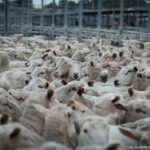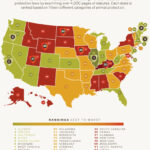In today’s digital age, social media platforms serve as powerful conduits for communication, sharing, and advocacy. However, they can also exhibit darker elements, showcasing grotesque content that highlights the unfathomable cruelty towards animals. While platforms like Facebook and Instagram provide an excellent opportunity for awareness and advocacy against animal cruelty, they can inadvertently expose users to distressing images and videos that can be both triggering and heart-wrenching. Understanding how to effectively navigate these platforms to block such distressing content is crucial for maintaining a positive online experience while bolstering the fight against animal cruelty.
To begin with, it’s essential to address why animal cruelty content captivates audiences. A common observation suggests that humans exhibit a paradoxical fascination with violence, often rooted in a desire for empathy or a shocking engagement. Disturbing content, including that depicting animal abuse, evokes strong emotional responses, which can desensitize viewers over time. As a result, it is imperative to manage your social media experience actively, allowing for informed choices about the material you consume. Doing so not only safeguards your mental well-being but also channels your focus towards more constructive dialogues surrounding animal rights.
Social media platforms, particularly Facebook, provide a plethora of options for curating your feed. User settings allow individuals to customize their experiences significantly. For those wishing to block animal cruelty content, the initial step involves adjusting privacy settings. Navigate to the “Settings” menu, followed by “Privacy Shortcuts,” which will lead you to options that enable filtering out specific types of posts.
Once you are in the right settings, take a moment to explore the “Manage your posts” section. Here, you will find a host of options for curating content visibility. Pay particular attention to the “Interests” tab, where you can fine-tune what appears on your timeline by removing categories or keywords associated with animal cruelty. If certain individuals or organizations’ posts are distressing, you can unfriend or unfollow them without altering your overall social media connections.
Moreover, Facebook also permits users to “Hide” specific posts or even “Snooze” individual accounts for a period of time. These options afford a temporary reprieve from content that is unwanted, particularly if the posts are recurrent. It is advisable to utilize these features instead of scrolling through distressing images repeatedly, which can take a toll on mental health and emotional stability.
For those who find themselves repeatedly encountering disturbing content despite taking the aforementioned steps, reporting the content directly to Facebook can serve as a powerful tool for change. Utilizing the “Report” button not only allows individuals to flag inappropriate material but also creates a collective stance against such posts, amplifying your voice in advocating for more humane social media practices.
In addition to blocking or reporting unwanted content on Facebook, consider diversifying your online experience to include positive, uplifting animal advocacy. Search for organizations and pages that promote animal welfare, rescue stories, or educational content about animal rights. Engaging with uplifting material can diminish the emotional weight of the negative, reinforcing a sense of community and fostering informed conversations around animal protection.
Aside from Facebook, other platforms like Instagram, Twitter, and TikTok also feature a wealth of animal cruelty content. Each has its unique set of settings and tools to help users curate their experience. On Instagram, for example, users can leverage the “Restricted” feature. This permits you to limit unwanted interactions without the need to unfollow an account. Similarly, utilizing the mute option will tailor your feed without severing ties with those whose posts may be distressing.
Moreover, Twitter provides a “Mute” feature for specific keywords or phrases. Users can actively add terms such as “animal abuse,” “animal cruelty,” or any specific hashtags commonly associated with such content to their mute list. By filtering out these specific keywords, you can significantly reduce your exposure to unwanted material. This proactive approach allows one to engage more positively within the broader discourse about animal rights.
The proliferation of animal cruelty content across social media can be disheartening. Nevertheless, it highlights a crucial juncture at which individuals can exercise agency in the digital landscape. Activism in the realm of social media extends beyond mere awareness; it requires action, vigilance, and a commitment to cultivating a healthier online ecosystem.
Ultimately, the responsibility to foster a more humane social media experience falls upon each user. By strategically utilizing the provided options to block or report animal cruelty content, curating a more positive feed, and engaging in active advocacy against these egregious acts, individuals can transcend the overwhelming negativity that often accompanies discussions on social media. The act of blocking these images and videos is not merely a matter of personal comfort; rather, it serves to refocus energy on constructive actions that advance the cause of animal welfare sustainably.
Combating animal cruelty is a collective endeavor that requires diligence, compassion, and an unwavering resolve. By tailoring your social media experience to align with these values, you not only prioritize your mental health but also contribute to a larger movement aimed at ending animal suffering. Let us wield the power of social media to foster compassion, rather than compounding distress. Every small act of filtering negative content is a step toward a more humane digital landscape.







